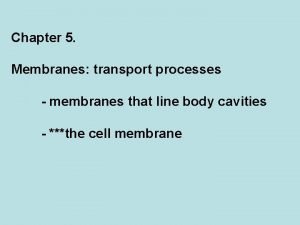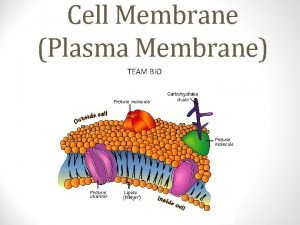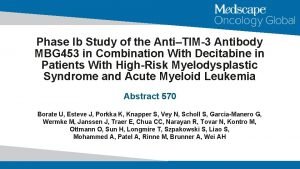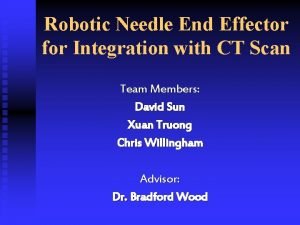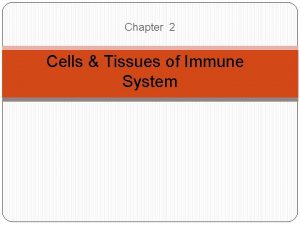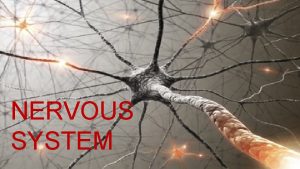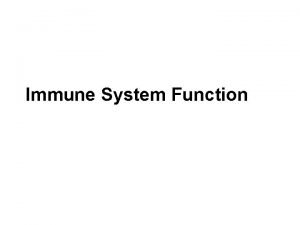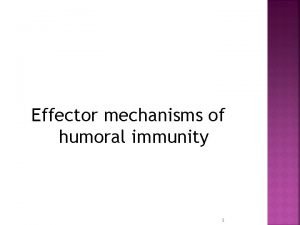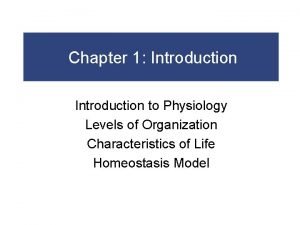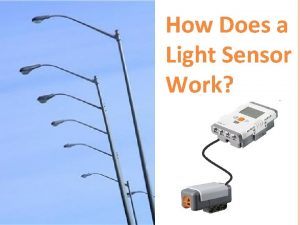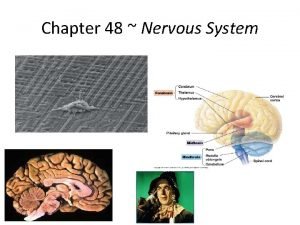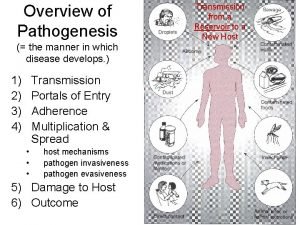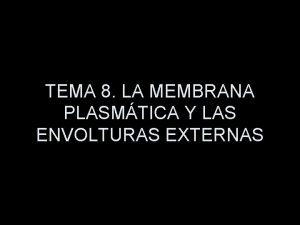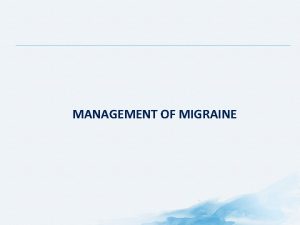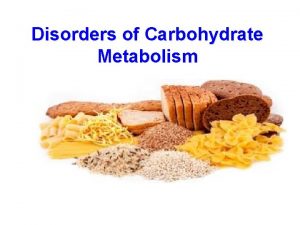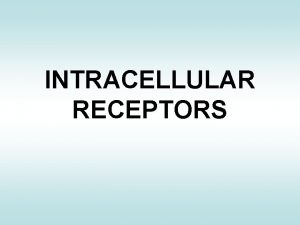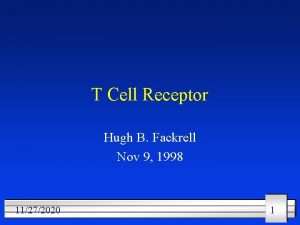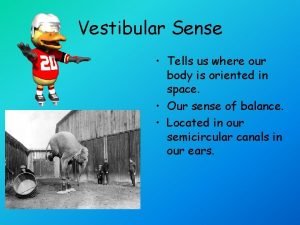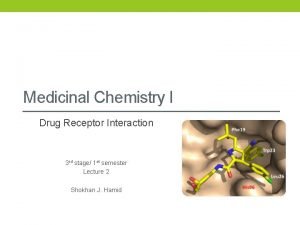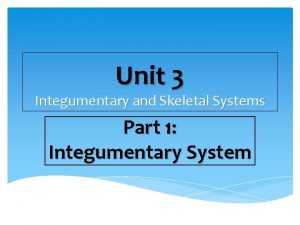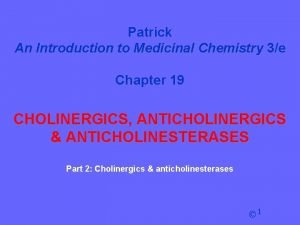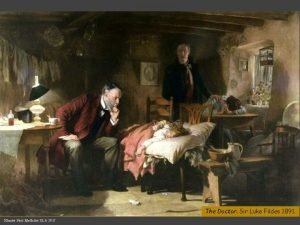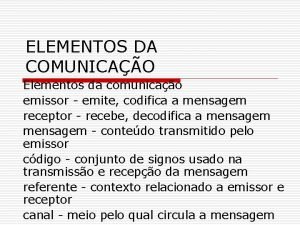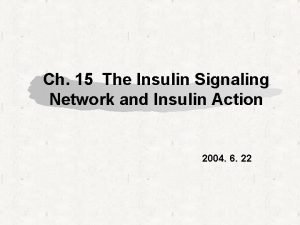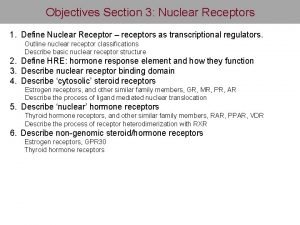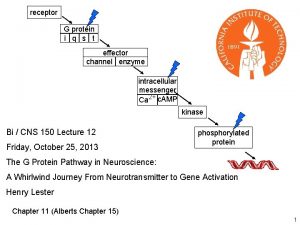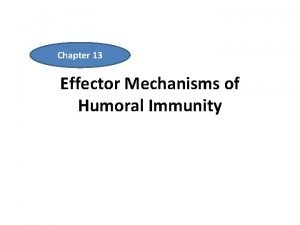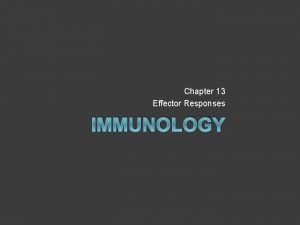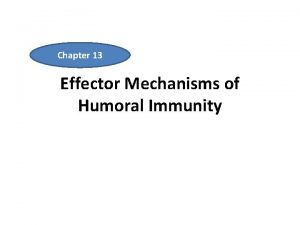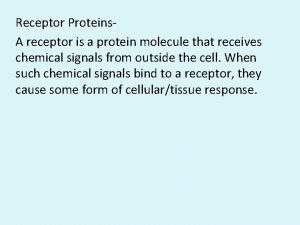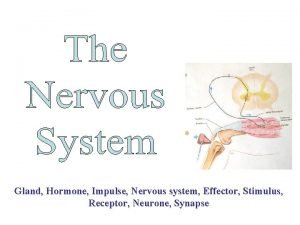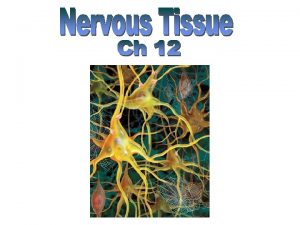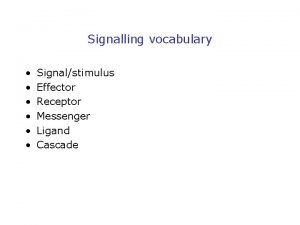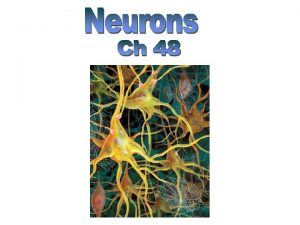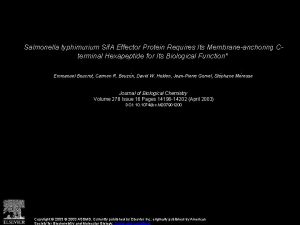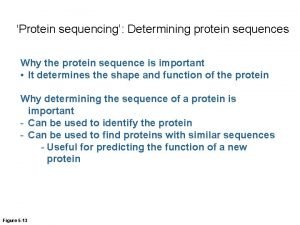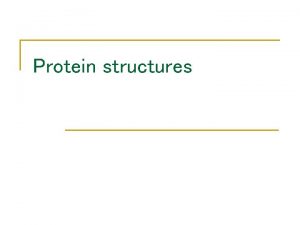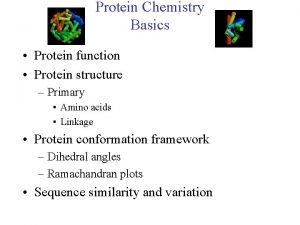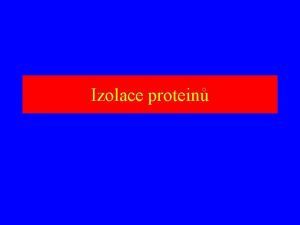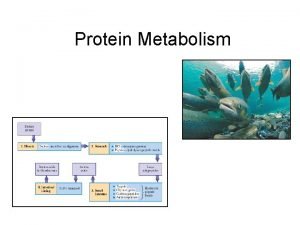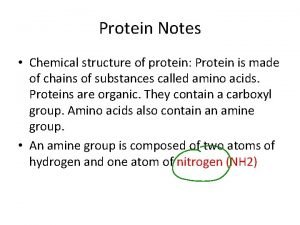receptor G protein i q s t effector




































- Slides: 36

receptor G protein i q s t effector channel enzyme intracellular messenger Ca 2+ c. AMP kinase Bi / CNS 150 Lecture 12 Friday, October 26, 2015 phosphorylated protein The G Protein Pathway in Neuroscience: A Whirlwind Journey From Neurotransmitter to Gene Activation Henry Lester Chapter 11 (Alberts Chapter 15) 1

From previous lectures Proof of chemical synaptic transmission, 1921. Many details of the G protein pathway were first worked out for neuronal control of the heart Vagus nerve runs from the head to the heart Spontaneous heartbeats in both hearts are stopped by stimuli to the “upstream” vagus The diffusible substance: acetylcholine acting on muscarinic ACh receptors smoked drum 2

Some postsynaptic membranes contain G protein-coupled receptors (“metabotropic” receptors) rather than ligand-gated channels cytosol vesicles containing serotonin vesicles containing acetylcholine vesicles containing dopamine synaptic cleft G protein-coupled serotonin receptor G protein-coupled (muscarinic) acetylcholine receptor G protein-coupled dopamine receptor cytosol 3

Several small-molecule transmitters serve as agonists for both ligand-gated channels & GPCRs (among vertebrates) Transmitter Ligand-gated channel GPCR ACh nicotinic ACh. R muscarinic ACh. R GABAA GABAB glutamate i. Glu. R m. Glu. R serotonin 5 -HT 3 5 -HTn, n = 1, 2, 4 -7 histamine (invertebrates only) Hn dopamine (invertebrates only) Dn 4

On a time scale of seconds (perhaps minutes), the language of the nervous system is still electricity; and we are still describing a set of mechanisms that manipulate impulse frequencies in individual neurons. 5

Plasma Membrane Components of the G Protein Pathway How fast? 100 ms to 10 s How far? Probably less 1 mm Neurotransmitter or hormone binds to receptor activates G protein Effector: enzyme or channel outside a Rasmussen et al. , Nature 2011 PDB file 3 SN 6 GTP b g a GDP + Pi b g inside

G protein-coupled receptors receptor G protein i q s t 1. All have 7 a-helices effector channel enzyme 2. There about 1000 G protein-coupled receptors in the genome. intracellular messenger (Most are still “orphans”; their ligands are unknown) Ca 2+ c. AMP 3. Individual receptors respond to: (a) a low-molecular weight neurotransmitter such as serotonin, dopamine, or acetylcholine (b) a short protein (8 -40 amino acids, a “peptide”) such as an endorphin (c) a relatively insoluble lipid such as anandamide, the endocannabinoid (d) an olfactory stimulus; or (e) light, in the eye (receptor = rhodopsin) 7

Structure of a heterotrimeric G protein: a molecular switch receptor β subunit α subunit G protein i q s t effector intracellular messenger GDP γ subunit PDF file: 1 GOT Note the “propeller” in the b subunit which caps the a subunit, preventing either subunit from interacting with the effector (There is no effector in this structure):

receptor Structure of a heterotrimeric G protein: a molecular switch G protein i q s t http: //www. its. caltech. edu/~lester/Bi-150/G protein-alpha-beta-gamma. pdb Viewer required effector intracellular messenger Note the “propeller” in the b subunit which caps the a subunit, preventing either subunit from interacting with the effector (There is no effector in this structure): http: //www. its. caltech. edu/~lester/Bi 150/G protein-beta-only. pdb 9

From previous lectures How ”tight” is the gigaohm seal? acetylcholine in the pipette opens channels in the pipette 2. Chemically tight acetylcholine outside the pipette opens channels outside the pipette The seal compartmentalizes molecules. Molecules outside the pipette do not mix with molecules inside the pipette 10

receptor Gi protein effectors include some K+ channels G protein i q s t effector channel enzyme intracellular messenger Ca 2+ c. AMP no transmitter +Gbg Normally: released from Gi; Here: added by experimenter no additions n= 0 (closed) b g b g 3 b. Mechanically tight Use weak suction. Excised “inside-out” patch allows access to the inside surface of the membrane no channel openings n = 1 (open) +Gbg n = 0 (closed) 11

receptor G protein-gated K channels inhibit neuronal (& cardiac) firing Resting GK EK -90 m. V Voltage-gated Ligand-gated G protein-gated outside GEPSP EEPSP ~ -5 m. V G protein i q s t GCl ECl -80 m. V GNa GK GK ENa +50 m. V EK -90 m. V effector channel enzyme intracellular messenger Ca 2+ c. AMP Capacitance cytosol = inside +60 additional K+ channels keep the membrane potential away from threshold, and therefore decrease firing rates m. V -60 1 ms 5 G protein gated K+ channels (GIRKs) are inward rectifiers. When activated, they “latch” the cell quiet until excitatory stimuli finally succeed in depolarizing to threshold. E K GK + E EPSP GEPSP + E Cl GCl + E Na. GNa DV = GK + G EPSP + G Cl + G Na

Gi-coupled receptors usually inhibit neurons Gi directly activates some K channels Gi directly inhibits some voltage-gated Ca channels Gi directly inhibits adenylyl cyclase All these actions slow neuronal firing and decrease transmitter release 13

receptor Gq, Gs, and Gt protein effectors include some enzymes Gq G protein i q s t effector channel enzyme Enzyme Ca 2+ in endoplasmic reticulum Ca 2+ in cytosol intracellular messenger Ca 2+ c. AMP 14

phosphatidyl inositol 4, 5 bisphosphate = PI(4, 5)P 2 Our first example of intracellular ligand-gated channels Alberts et al. , Molecular Biology of the Cell, © Garland Science

Figure on p. 242 16

KCNQ channels PIP 2 is necessary for keeping some K channels open. Gq activation leads to less PIP 2 Result: some K channels close. These are called “M” channels, and are now termed the KCNQ family. because they were first discovered downstream from muscarinic receptors. . . A different muscarinic receptor subtype from the one that opens K channels in heart. Part of Figure 11 -11 17

receptor G protein i q s t Gq, Gs, and Gt protein effectors include some enzymes: Gs-coupled receptors often stimulate neurons & other cells effector channel enzyme intracellular messenger Ca 2+ c. AMP Gs Mg 2+ cyclase ATP cyclic AMP (c. AMP) See Figure 11 -3 18

receptor G protein i q s t caffeine prolongs the intracellular messenger c. AMP effector channel enzyme intracellular messenger Ca 2+ c. AMP cyclase Inhibited by caffeine phosphodiesterase AMP 19

receptor G protein i q s t cyclase c. AMP ATP effector channel enzyme Inhibited by caffeine phosphodiesterase AMP intracellular messenger c. AMP Ca 2+ c. GMP Phosphodiesterase inhibitors prolong the life of intracellular messengers cyclase c. GMP GTP Inhibited by. . . phosphodiesterase GMP 20

Intracellular messengers bind to proteins A few ion channels (olfactory system, retina) Ca 2+ intracellular messenger Ca 2+ c. AMP kinases phosphorylated protein and 21

Ca 2+ or c. AMP binds to kinase; this activates the kinase. intracellular messenger Ca 2+ c. AMP kinase phosphorylated protein Alberts 11 -31 © Garland kinase serine Residue in target protein phosphatase 22

Example of ion channel phosphorylation: β-adrenergic receptors regulate accommodation in hippocampal neurons Apply norepinephrine intracellular messenger Ca 2+ c. AMP kinase phosphorylated protein Norepinephrine inhibits the SK (smallconductance, Ca 2+ -activated K+) channel. Apply 8 -bromo-c. AMP Apply forskolin (then apply glutamate in the presence of TTX) epsp Therefore the after-hyperpolarization (AHP) is smaller and spike trains are longer. The norepinephrine effect is also mimicked by agents that mimic or increase c. AMP. 1. phosphodiesterase. does not hydrolyze 8 -bromo-c. AMP 2. Forskolin activates cyclase

Example of ion channel phosphorylation: β-adrenergic receptors regulate accommodation in hippocampal neurons Apply norepinephrine intracellular messenger Ca 2+ c. AMP kinase phosphorylated protein Norepinephrine inhibits the SK (smallconductance, Ca 2+ -activated K+) channel. Apply 8 -bromo-c. AMP Apply forskolin (then apply glutamate in the presence of TTX) epsp Therefore the after-hyperpolarization (AHP) is smaller and spike trains are longer. The norepinephrine effect is also mimicked by agents that mimic or increase c. AMP. 1. phosphodiesterase. does not hydrolyze 8 -bromo-c. AMP 2. Forskolin activates cyclase

receptor Discussion G protein i q s t Selective advantage of such a complex pathway? The neurotransmitter or hormone does not directly influence the response--from the viewpoint of (a) Chemistry (b) Speed (c) Localization (to some extent) effector channel enzyme intracellular messenger Ca 2+ c. AMP All this amplification and indirect coupling requires energy! Limitations of the pathway: (a) Speed (b) co-operativity Further advantages / limitations? Suggestions in class: 25

receptor Genomic diversity of the G protein pathway ~ 1000 G protein-coupled receptors All have 7 helices G proteins all have 3 subunits There are ~ 18 a subunit genes in 4 major classes i, q, s, t ~ 5 b subunits ~ 3 g subunits G protein i q s t effector channel enzyme intracellular messenger Ca 2+ c. AMP and many “accessory proteins”. Now we discuss one There are 2 major types of effectors Channels affected by G proteins: ~5 known K channel genes ~4 Ca 2+ channels Enzymes 3 major classes, each with 2 to 10 members 26

Regulators of G protein Signaling tune the kinetics of effector (GIRK channel) activation/deactivation CHO Expressed: muscarinic ACh Receptor + GIRK. . . + RGS 4 GTP RGS Gαi 27

On a time scale of seconds (perhaps minutes), the language of the nervous system is still electricity; and we are still describing a set of mechanisms that manipulate impulse frequencies in individual neurons. Now we proceed to effects on a longer time scale (hours to days). Classical “Outside-in” Mechanisms for Long-term Actions on G Protein Pathways 28

Seymour Benzer’s early Drosophila learning mutants “Normal Drosophila learn to avoid an odorant associated with electric shock. A. . . mutant, dunce, has been isolated that fails to display this learning in spite of being able to sense the odorant and electric shock and showing essentially normal behavior in other respects. ” Quinn, et al. , PNAS 1974; Dudai et al. , PNAS 1976 fluorescent lamp

Two of Seymour Benzer’s early Drosophila learning mutants involve the c. AMP system cyclase rutabaga c. AMP ATP phosphodiesterase dunce AMP 30

intracellular messenger Ca 2+ c. AMP kinase phosphorylated protein Nucleus 31

Many genes have a DNA sequence called “c. AMP-Ca 2+ responsive element” (CRE) intracellular messenger Ca 2+ c. AMP kinase Target or reporter gene CRE p. CREB phosphorylated protein The transcription factor that binds to this CRE: “c. AMP-Ca 2+ responsive element binder” (CREB). Alberts et al. , Molecular Biology of the Cell, © Garland Science

from Lecture 12 receptor membrane G protein i q s t effector channel enzyme The pathway from GPCR to gene activation intracellular messenger Ca 2+ c. AMP cytosol kinase phosphorylated protein nucleus How fast? 10 s to days How far? Up to 1 m 33

A typical schematic drawing See also Figure 11 -15 34

Henry Lester’s “office” hours continue all term Monday & Friday 1: 15 -2 PM Outside the Red Door End of Lecture 12 35

receptor G protein i q s t cyclase effector channel enzyme c. AMP ATP Inhibited by caffeine phosphodiesterase AMP intracellular messenger c. AMP Ca 2+ c. GMP Phosphodiesterase inhibitors prolong the life of intracellular messengers cyclase c. GMP GTP Inhibited by Viagra, Cialis, Levitra phosphodiesterase GMP 36
 Receptor protein
Receptor protein Receptor protein
Receptor protein Immune effector cells
Immune effector cells End effector examples
End effector examples End effector needle
End effector needle Immune effector cells
Immune effector cells Integration center
Integration center Effector function of antibody
Effector function of antibody Effector mechanism of humoral immunity
Effector mechanism of humoral immunity Sensor integrator effector
Sensor integrator effector How a light sensor works
How a light sensor works Effector cells in nervous system
Effector cells in nervous system Carrier vs channel proteins
Carrier vs channel proteins Protein-protein docking
Protein-protein docking Definicion emisor receptor mensaje codigo canal
Definicion emisor receptor mensaje codigo canal Receptor mediated endocytosis
Receptor mediated endocytosis Endocitosis mediada por receptores
Endocitosis mediada por receptores Elementos del mundo narrativo
Elementos del mundo narrativo Osteopern
Osteopern Combinacoes sanguineas
Combinacoes sanguineas Centro integrador arco reflejo
Centro integrador arco reflejo Insulin binding to receptor
Insulin binding to receptor Emisor receptor mensaje código canal contexto
Emisor receptor mensaje código canal contexto Intracellular receptors
Intracellular receptors Fusi gigi
Fusi gigi Innoucous receptor menerima
Innoucous receptor menerima T cell receptor
T cell receptor Receptor cells for the vestibular sense are located in the
Receptor cells for the vestibular sense are located in the Drug receptor interaction medicinal chemistry
Drug receptor interaction medicinal chemistry Merkel disc receptor
Merkel disc receptor Muscarinic receptor
Muscarinic receptor Benzodiazepine dose and route
Benzodiazepine dose and route Via motora
Via motora Emissor e receptor
Emissor e receptor Insulin and insulin receptor
Insulin and insulin receptor Receptor gaba b
Receptor gaba b Nuclear receptors
Nuclear receptors
